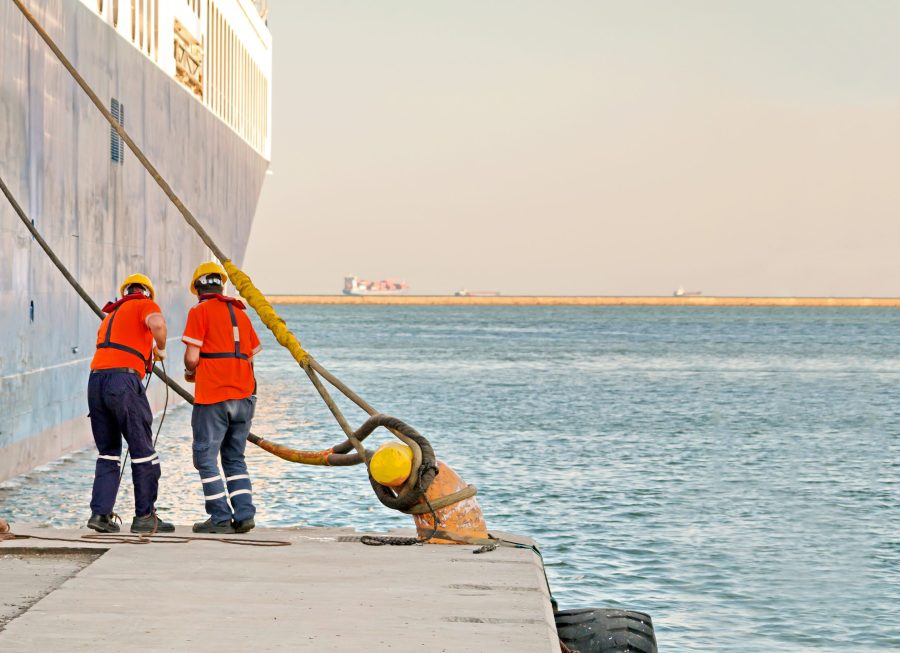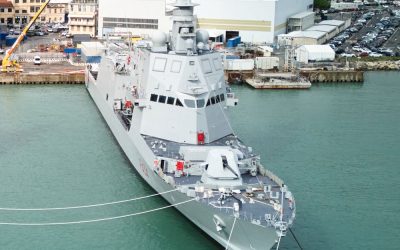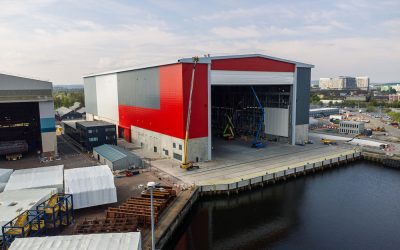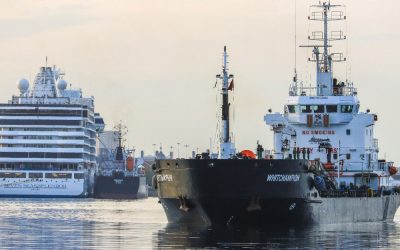By Paul Dyer, technical manager, Marlow Ropes
Ropes have long been used in maritime operations, whether in port or at anchor, at sea or for offshore applications. Safety is an over-riding factor in their choice and application, to protect people and equipment. But what are the common causes of wear and tear, and factors to consider when sourcing ropes and overseeing their ongoing care?
Risk assessment
Reliability is paramount to protect both crew and vessels, with vessel operators responsible for determining safety levels. Risk considerations include:
- Strength and weight – ropes for mooring and anchoring will need to be strong enough to offset the pulling load of the vessel, equipment and crew. It is the responsibility of the user to determine appropriate minimum breakload. With anchor and docking ropes, avoiding breakage is essential for the safety of the ship and crew to ensure ship stability and stop vessels drifting away or colliding with other ships and structures.
- Elongation/stretch – stretch is vital to withstand the ocean swell and currents, without creating sudden movements which could be a hazard to crew or damage equipment and deck fastenings. Tension fatigue from constant stretching can eventually cause premature rope wear, leading to more frequent replacement and higher costs. The degree of elongation also affects breakload, with minimal elongation using less breakload, extending rope life and reducing crew requirements.
- Elasticity/creep – rope will recover on release of loads, once relaxed. Permanent extension occurs over the long term, however, where plaits, strands and yarns bed in. Non-reversible molecular changes or creep also occurs where ropes are subjected to continually high loads, affecting rope performance and strength.
- Durability – consider the wear and tear in use and the susceptibility of the rope to abrasion damage from where it passes over or through equipment. Additionally, some rope materials are better than others at tolerating the harmful effects of sunlight and chemical exposure.
- Weather resistance – marine ropes are exposed to a wide array of ambient temperatures. High temperatures in particular, may induce greater core friction contributing to melting risks.
Horses for courses
Marine ropes are now largely synthetic, made from technical fibres such as Dyneema HMPE, polyester and heat-resistant aramid fibres which offer high performance and durability.
Understanding how ropes are affected by external influences and material characteristics is key in matching the rope’s intrinsic properties to the specific environment in which vessels are operating and the application, be it escort, ocean towing, mooring, tankers and cargo ships, deepwater heavy lifting or other offshore activities including oil, gas and wind platforms.
Common types for dockside and ocean use include nylon which is a preferred choice for mooring lines for its strength and stretch, with the ability to absorb shock and return to its original length. Polyester also provides a versatile all-round option, valued for its lightweight strength and durability, with good UV and abrasion resistance, while remaining flexible even when wet. However, it is not an option where the ability to float is a requirement.
Other materials include polypropylene, polyethylene and polyamide which are similarly lightweight and robust. Overall, synthetic ropes offer clear advantages over natural rope which can easily be damaged by mould, mildew and UV light plus tends to shrink when wet, making it difficult to manage.
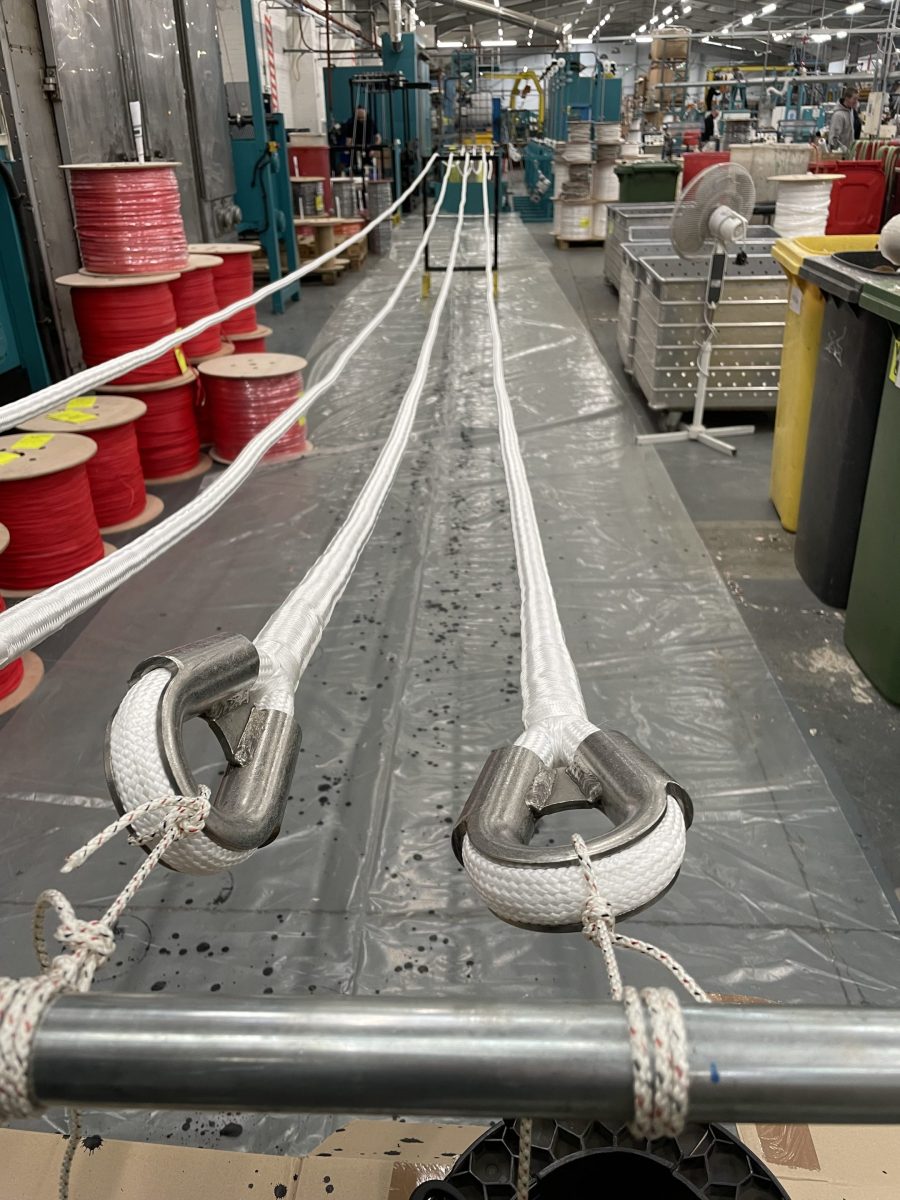
High-performance winch ropes during the manufacturing process showing an example of terminated ends (spliced eyes with metal thimble)
Extensive research and development and innovative engineering has resulted in new high-performance solutions that have extended the boundaries of rope use. The latest generation ropes offer long life, flexible handling and increased safety in use while reducing operational costs overall.
High modulus fibre ropes now available include aramid fibres and liquid crystal polymer, along with the latest innovation high modulus polyethylene (HMPE), a high-performance material designed for high-load, safety critical applications.
Sustainability is also increasingly important, with the marine sector focused on reducing its carbon footprint. Marlow’s bio-based Dyneema (HMPE) rope for example, uses waste from the pulp and timber industry as its primary raw-material, while maintaining the performance of standard Dyneema ropes.
Safety and care
Maintaining the heavy ropes used by larger vessels and ocean installations is critical, given the extreme loads they are subjected to. Regular inspections ensure compliance with safety standards, while keeping ropes in good condition to ensure longevity and reduce lifecycle costs.
Storage – Incorrectly coiling ropes will introduce a twist into them, which can cause operational issues further down the line. Do not allow dirt or abrasive materials to penetrate ropes by dragging them over rough surfaces or dirty ground as they can easily work themselves into the fibres, causing hidden damage. Clean ropes gently with mild soap and rinse before hanging up to dry naturally. Avoid exposure to extreme temperatures and prolonged direct UV exposure which can cause degradation and loss of performance. Exposure to water can also affect elasticity and cause shrinkage.
Inspection – Ropes should be inspected at regular intervals in respect of:
- Excessive abrasion could lead to significant loss of strength. Chafe covers are recommended in certain high-use areas to minimise abrasion.
- It is worth noting that a percentage of the strength in ropes will be lost when a rope is terminated, either in the form of a knot, sewing or splice. Where ropes are spliced, maintaining the care of spliced eyes is important.
End of life replacement – Look for critical signs of degradation which may decide when a rope needs to be retired such as:
- Glazing – glossy areas of rope, which can indicate exposure to excessive heat and melting.
- Discolouration – dirt may be present that may cause internal abrasion or could be an indication of chemical damage and rope weakness.
- Inconsistencies – lumps, flat areas or thin areas could indicate that the rope has been damaged internally.
Ropes are an essential element of marine operation and represent a considerable outlay. Taking the time to choose the right solution to your needs and the time and effort to ensure your ropes are maintained correctly, is important not only to minimise risk but also to protect your original investment.
